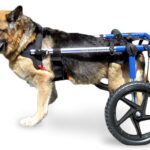When it comes to feeding our furry friends, pet owners often wonder what human foods are safe for dogs. One common question is whether dogs can eat pork bones. While it might seem natural to share a leftover bone with your dog, especially since they instinctively love chewing, it’s crucial to understand the potential risks and benefits of doing so.
The Short Answer
No, dogs should not eat pork bones. Although bones may seem like a natural treat, pork bones—whether raw or cooked—can pose significant health risks to dogs.
Why Are Pork Bones Dangerous for Dogs?
Here are some reasons why pork bones can be harmful:
1. Splintering Risks
Cooked pork bones, in particular, become brittle during the cooking process. When chewed, they can easily splinter into sharp pieces that may:
- Puncture your dog’s digestive tract.
- Cause choking hazards.
- Lead to blockages in the intestines.
2. Raw Bones Are Not Safe Either
While raw bones are generally softer, they still carry risks. Raw pork bones can contain harmful bacteria like Salmonella or E. coli, which can cause infections in dogs and even humans who come into contact with contaminated surfaces.
3. Digestive Problems
Pork is high in fat, and even the residue on bones can upset a dog’s stomach. Excess fat can lead to:
- Diarrhea.
- Vomiting.
- Pancreatitis, a severe inflammation of the pancreas.
What About Other Types of Bones?
If you’re looking for a safe alternative to pork bones, consider these options:
- Beef Bones (Raw): Large, raw beef bones are harder and less likely to splinter.
- Specially Designed Dog Chews: Many pet stores offer safe, digestible chews designed specifically for dogs.
Signs Your Dog Has Eaten a Pork Bone
If your dog has accidentally consumed a pork bone, monitor them closely for the following symptoms:
- Vomiting.
- Lethargy.
- Loss of appetite.
- Bloody stools.
- Signs of choking or distress.
If any of these symptoms appear, contact your veterinarian immediately.
Tips for Safe Treating
- Always supervise your dog while they are chewing any kind of bone or treat.
- Avoid giving bones from table scraps, as they are more likely to be cooked.
- Introduce bone-like alternatives such as dental chews or rubber toys.
Final Thoughts
While it might be tempting to toss your dog a pork bone, the risks far outweigh the benefits. Prioritizing your pet’s safety means avoiding potentially harmful foods and sticking to veterinarian-approved treats.
Remember, when in doubt about what’s safe for your dog to eat, consult your veterinarian. A happy, healthy dog starts with informed feeding choices!



